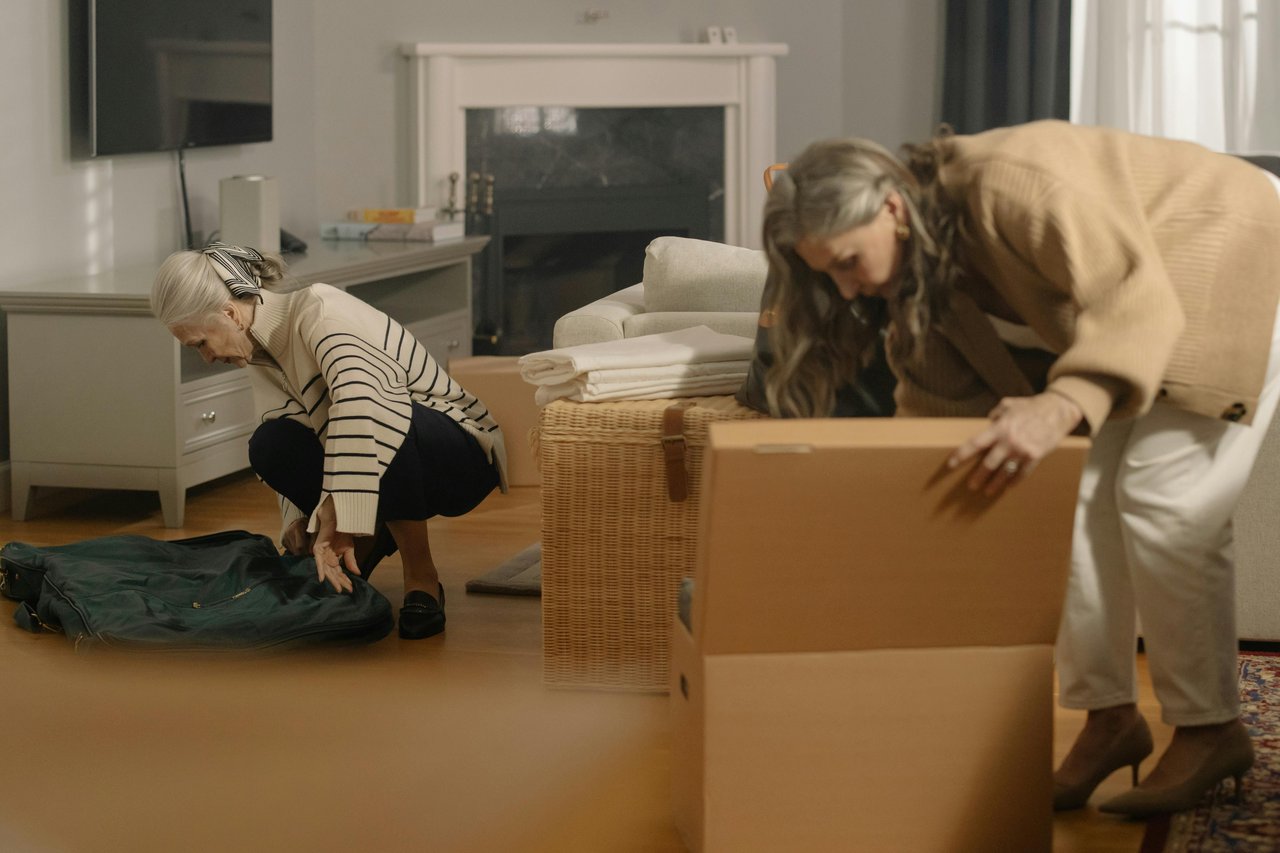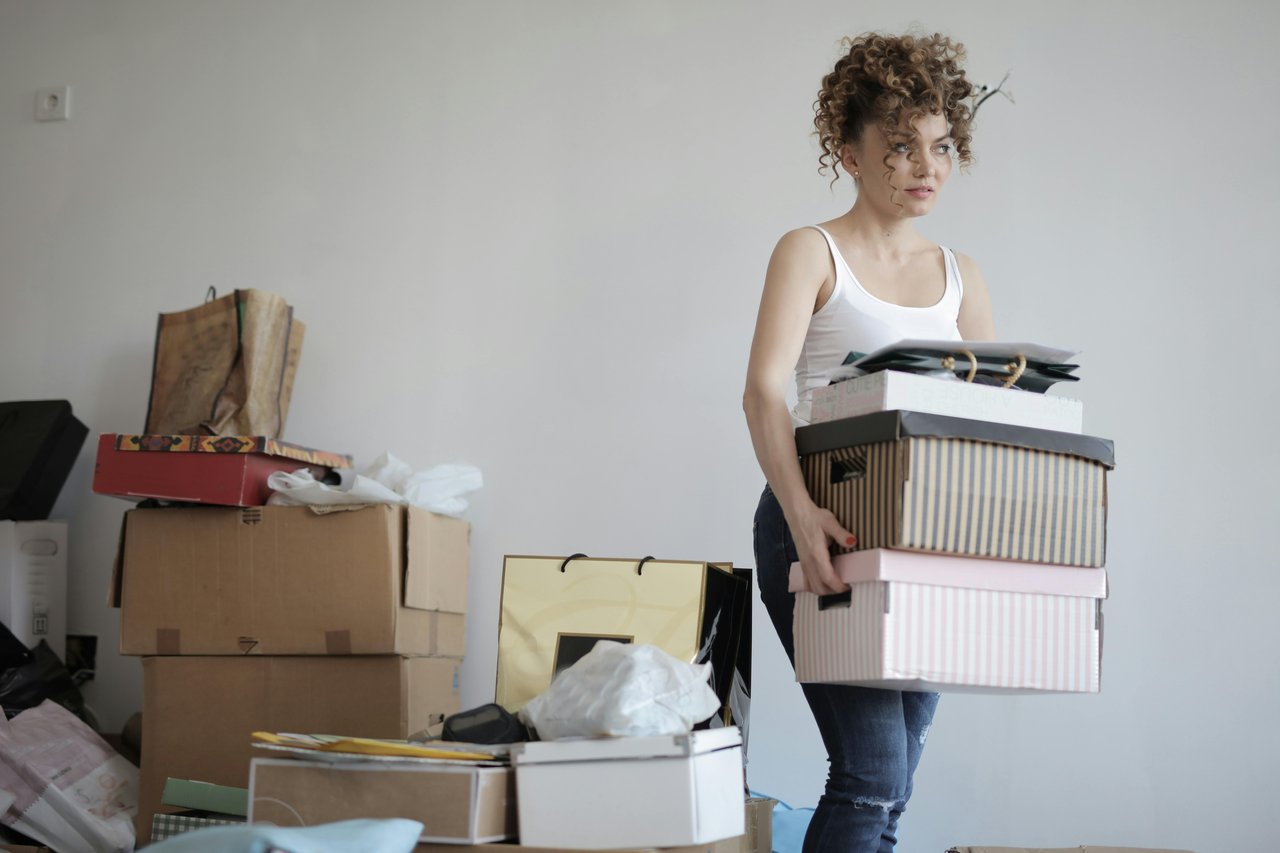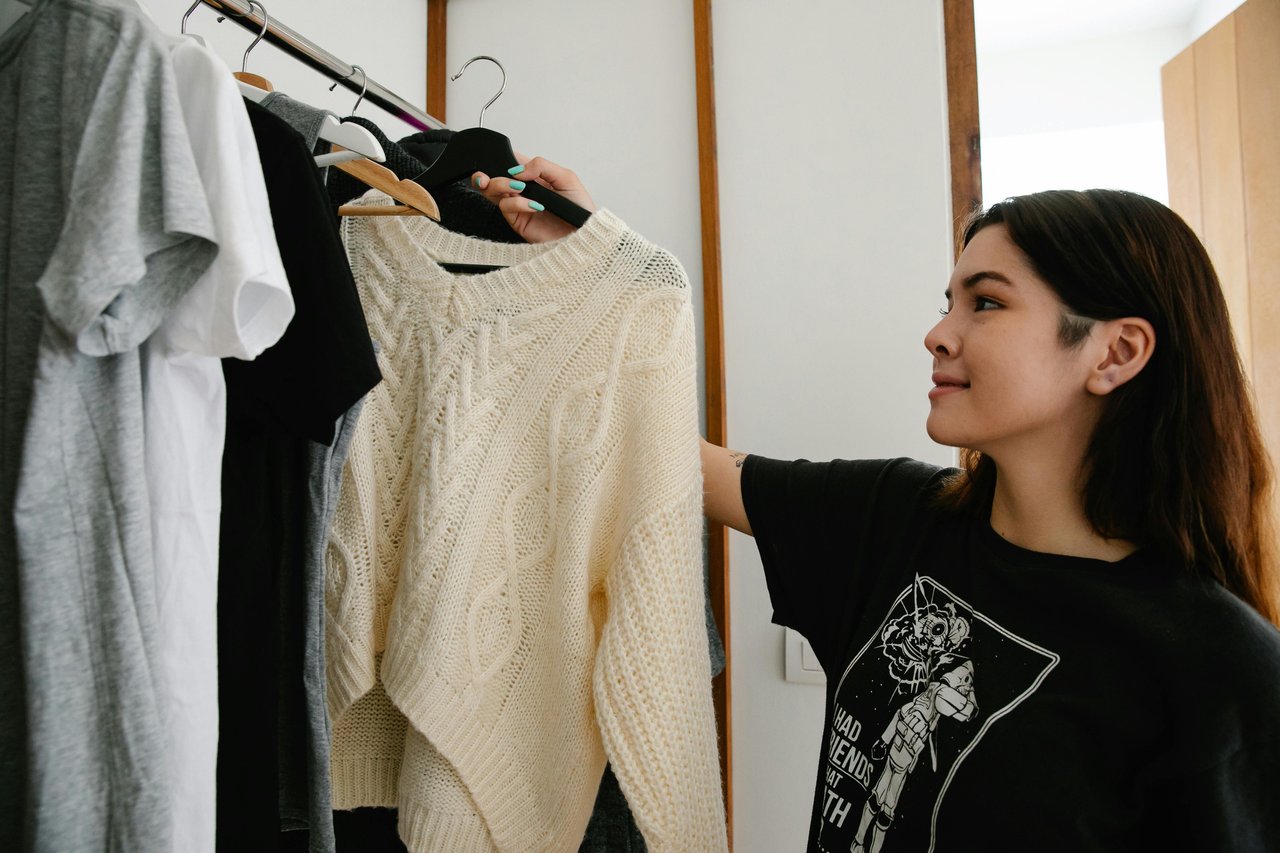So, you want to sell your house?
An uncluttered home is crucial when selling because it significantly influences buyers' perceptions. A tidy, organized space allows potential buyers to visualize themselves living in the home, making it easier for them to see its full potential. Clutter-free homes appear more spacious, clean, and well-maintained, which can create a positive impression and increase the home's perceived value. Additionally, reducing clutter highlights the home’s best features, such as architectural details, storage solutions, and overall layout. By presenting a neat and orderly environment, sellers can make a strong first impression, encouraging buyers to feel confident about the property's condition and enhancing its appeal in a competitive market.
But, you may have noticed your home is not currently showing-ready. Not a problem! Let’s just get to work. A cluttered home is not necessarily a negative statement about the homeowner. A home can quickly become cluttered due to a combination of factors. Daily life naturally brings in items such as mail, memories, and personal belongings that can accumulate if not regularly sorted and stored properly. In this busy world, we don’t often have to time to do that. Over time, it’s easy to accumulate items we no longer need or use but haven't yet discarded. Lack of sufficient storage solutions can exacerbate the problem, causing things to pile up on counters, in closets, on tables, and in corners. Additionally, busy schedules often leave little time for tidying up, resulting in clutter building up in high-traffic areas.
Keeping your home organized can seem like a daunting task, but with a few strategic steps, you can create a more orderly and peaceful living environment. Here are some practical tips to help you get started:
Step 1: Declutter
Before you start organizing, take time to declutter. Go through each room and sort items into 3 categories: keep, donate, or sell. Deciding whether to keep something often requires a bit of introspection and practicality. Here are some questions you can ask yourself to make the decision easier:
KEEP PILE:
-
- Does it serve a purpose? Consider if the item is still functional and if you use it regularly. If it's something you haven't used in the past year, it might be time to let it go.
- Does it bring you joy? Marie Kondo's famous question can be a helpful guide. If the item sparks joy and has sentimental value, it may be worth keeping.
- Is it in good condition? Assess the item's condition. If it's broken, worn out, or in need of repair and you're not committed to (or are to busy to take on the task of) fixing it, it's probably best to part with it.
- Do you have duplicates? Check if you have multiple types of items serving the same purpose. Keeping only your favorite or the best-performing one can help reduce clutter.
- Does it fit your current lifestyle? Our needs and preferences change over time. If an item no longer fits your lifestyle or space, it might be better to let it go.
- Would you buy it again? Ask yourself if you would purchase the item again today. If the answer is no, it's a strong indicator that it's time to let it go.
- Can it be stored easily? Consider if you have adequate storage space for the item. If storing it means creating more clutter or it's not easily accessible, it might be worth reconsidering.
By thoughtfully considering these questions, you can make more informed decisions about what to keep and what to discard, ultimately leading to a more organized and harmonious living space. If you haven't used it in the past year, it's probably time to let it go. But, if something has sentimental attachment, don’t be quick to get rid of it. You can find a way to organize your sentimental items so that they do not become clutter and are well-organized.
DONATE PILE:
Donating items you no longer need can be a great way to give back to the community and declutter your home. Here are some ideas on how to donate effectively:
-
- Local Charities: Organizations like Goodwill, Salvation Army, and local shelters often accept gently used clothing, furniture, and household items. Check their websites for specific donation guidelines.
- Donation Drives: Schools, religious organizations, and community centers frequently hold donation drives. These events can be a convenient way to donate multiple items at once and they can be put to good use to help others who are in need, such as the unhoused.
- Thrift Stores: Many thrift stores accept a wide range of donations, from clothes to electronics. Proceeds from sales often support local programs and services.
- Online Platforms: Websites like Freecycle, Craigslist, and Facebook Marketplace allow you to give away items to people in your community who need them. This can be a way to find new homes for your stuff quickly.
- Non-Profit Organizations: Specialized non-profits may accept specific items. For example, Dress for Success takes professional attire to help individuals prepare for job interviews, and Habitat for Humanity ReStores accept building materials and home improvement items.
- Libraries and Schools: Donate books, educational materials, and supplies to local libraries or schools. These institutions often appreciate resources that can support learning and literacy.
- Animal Shelters: Many animal shelters accept old towels, blankets, and pet supplies. These items can provide comfort and care to animals in need.
- Hospitals and Nursing Homes: Some hospitals and nursing homes accept donations of books, puzzles, and gently used clothing to provide entertainment and comfort to patients and residents.
- Clothing Donation Bins: You can find clothing donation bins in various locations, such as parking lots or outside grocery stores. These bins are usually operated by charities and offer a convenient drop-off option.
- Friends and Family: Don’t forget to ask friends and family if they need anything you’re giving away. Sometimes, the best donations are those that go to someone you know and care about.
By donating your unwanted items, you can help others while also reducing clutter in your home. It’s a win-win situation!
SELL PILE:
Selling used items can be a great way to declutter and make some extra cash, but it's important to do it safely. Choose well-known and trusted platforms like eBay, Facebook Marketplace, or dedicated apps like OfferUp. These platforms have measures in place to help ensure safe transactions. There are also the time tested methods of garage sales and yard sales if you live in a community that does not prohibit them. Whatever platform you choose, take safety precautions like the following:
-
- Set Up a Safe Meeting Place: If you're meeting buyers in person, choose a public, well-lit location. Some police stations offer designated areas for online transactions, which can add an extra layer of security. If possible, bring a friend or family member with you when meeting a buyer. It adds an extra level of safety and support.
- Keep Personal Information Private: Avoid sharing personal details like your home address, phone number, or email. Use the platform's messaging system to communicate with buyers.
- Protect Yourself Online: When selling online, be wary of scams. Be cautious of buyers who want to use unconventional payment methods. Avoid deals that seem too good to be true and report any suspicious behavior to the platform's support team.
- Clearly Describe Items: Provide accurate descriptions and photos of the items you're selling. This helps manage buyer expectations and reduces the likelihood of disputes.
- Set Realistic Prices: Price your items fairly to attract serious buyers. Remember that sentiment does not affect value in the eyes of a new buyers. Research similar listings to gauge a reasonable price range.
- Check Buyer Profiles: If the platform allows, review the buyer's profile and feedback from previous transactions. This can give you an idea of their reliability.
By following these tips, you can sell your used items with confidence and minimize the risks associated with online and in-person transactions.
Step 2: Create Zones
Establish specific zones for different activities or items. For example, designate a spot for mail and keys near the entryway, a dedicated homework area for kids, and a cozy reading nook. Planning ahead will help to keep everything in its place, makes daily routines smoother, and helps to ensure that all of your hard work organizing and decluttering will last and was not in vain.
Step 3: Use Storage Solutions
Invest in storage solutions that suit your needs and style. Baskets, bins, and boxes can keep smaller items organized, while shelves and cabinets provide storage for larger items. Clear containers are great for easily identifying contents. Decorative baskets and bins can be placed on shelves or under tables to store smaller items. They keep things tidy and can add to your decor. Utilize wall space with shelves, hooks, and pegboards. This can free up floor space and keep items within easy reach. Utilize your furniture that doubles as storage, such as ottomans with hidden compartments, beds with built-in drawers, and coffee tables with shelves. Use storage bins or vacuum-sealed bags to keep out-of-season clothes, bedding, or other items neatly tucked away under the bed. Make use of corner spaces with specially designed corner shelves or cabinets, which can be particularly useful in bathrooms and kitchens. Install hanging racks in the kitchen for pots and pans, in the bedroom for jewelry and accessories, or in the entryway for coats and bags. Portable rolling carts can serve as extra storage in the kitchen, bathroom, or laundry room, and can be moved out of the way when not needed.
Step 4: Maximize Closet Space
Closets often become a catch-all in homes due to their hidden, enclosed nature, making them convenient dumping grounds for miscellaneous items. However, when viewing your home, buyers will open the closet doors. Which means the closet is not a good option for hiding the unsightly things in your home. And stacking things to the ceiling can cause a dangerous trap for the unsuspecting consumer! Make the most of your closet space by using organizers like hanging shelves, shoe racks, and cascading hangers. Consider storing out-of-season clothes in under-bed bins or vacuum-sealed bags to free up space. Start by going through your clothes and accessories to remove items you no longer wear or need. Consider donating or selling items that don’t fit or you haven’t used in a year and a half. Install shelves or hanging organizers to use the full height of your closet. This is great for storing shoes, hats, and other accessories. Add a second hanging rod to create two levels of hanging space for shorter items like shirts and skirts. This effectively doubles your hanging capacity. Use hooks and pegs on the closet door or walls for bags, scarves, belts, and jewelry. This keeps them visible and easily accessible. Replace bulky hangers with slim, non-slip velvet hangers. They take up less space and help keep clothes from slipping off while also looking cohesive at a glance. Utilize your floor space by using baskets or bins on the floor for additional storage of items like shoes, bags, or bulkier items.
Step 5: Home Office Space
Even if you don’t have an official home office, every household has paper clutter like documents, contracts, bills, etc. This means every household needs a way to organize the home office needs that naturally arise; even if it’s just a shelf or a box! Manage paper clutter by setting up a filing system for important documents and a shredding routine for unnecessary papers. Go digital where possible by scanning documents and opting for electronic statements and bills. Labeling is a simple yet effective way to maintain organization. Use labels on bins, boxes, and shelves so everyone in the household knows where things belong. This can be particularly helpful if more than one person accesses the contents of your home office.
Step 6: Create a Cleaning Schedule
Establish a regular cleaning schedule to keep your home organized. Assign daily, weekly, and monthly tasks to ensure that everything gets done consistently. Involve the whole family to share the workload. While your home is listed for sale, the more flexible you can be with showing times, the more often potential buyers may be able to view your home. If your home is maintained, that potentially means more buyer traffic. And having a cleaning schedule and agreement with everyone in the family is an important step!
Step 7: Ask for advice
Everyone’s organizational needs and preferences are different. Personalize your approach to what works best for you and your household. The key is to create a system that is sustainable and easy to maintain. By following these tips, you can create a more organized and harmonious home that will not be riddled with distractions for potential homebuyers.
In my 25+ years and 1,300+ transactions in Arizona real estate, I have helped numerous clients prepare their home for listing. If you are thinking about selling your home in Phoenix or Scottsdale and would like an expert opinion on what can be done to make your home appeal to homebuyers in today’s market in Arizona, give me a call at 602-558-5200 to put Arizona’s Top RE/MAX agent to work for you.










